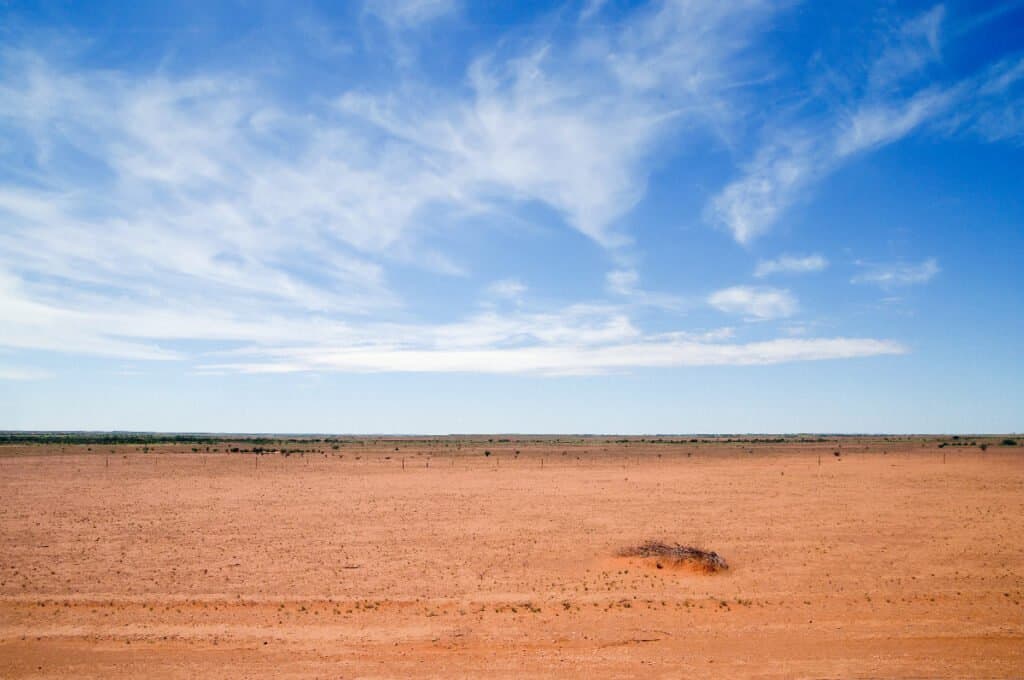
Much of Australia’s interior is covered by desert, and the area surrounding Uluru is no exception.
©clearviewstock/Shutterstock.com
Uluru is a popular tourist destination. It’s part of the Kata Tjuta National Park. It was known as Ayers Rock for many years but was changed back to Uluru to respect the people who lived on the land. Uluru is a large rock formation found in the desert. While many visitors come solely to see the rock, there are also some amazing animals near Ayers Rock worth stopping to scout for.
There are a mix of reptiles, birds, and mammals. Some of them are quite vibrant in their colors, while others you may have to be on the lookout for. Don’t forget to stop and check around the rocks and water holes for these 12 amazing animals in the area.
Where Is Ayers Rock?
Ayers Rock, known as Uluru since 1993, is a UNESCO World Heritage area. It’s located in Kata Tjuta National Park. It’s located in the southern part of the Northern Territory in Central Australia. It lies 208 miles (335 km) as the crow flies or 260 miles (450 km) by road south of Alice Springs.
What Makes Ayers Rock Legendary?
Kata Tjuta National Park is pretty amazing all on its own. It’s one of the very few locations in the world that is part of UNESCO because of both its cultural and natural values. The park is over 311,000 acres and is a famous landscape in the area.
Uluru is a natural sandstone formation. It stretches over 1142 feet (348 m) above the ground. The circumference is 5.8 miles (9.4 km) around. If that wasn’t amazing enough, it appears to change color through the day as the sun shifts. Sometimes it grows red, sometimes silver, and many shades in between.
These beautiful colors and the immense size are what make Uluru legendary. Tourists and locals alike love visiting the area and seeing the beautiful rock formations.
Animals to Find Near Uluru
Being in a desert region, Uluru has quite a diversity of wildlife. You may come across the standard snakes and lizards, but there are also colorful birds, cute marsupials, and even wild dogs. While the rock is an amazing sight, don’t forget to stop and check out your surroundings.
Reptiles and Amphibians
Amphibians and reptiles might be most of what you expect to see in a desert. There are all sorts of interesting ones to see near Uluru. Even if you don’t like reptiles like slinky lizards, you can’t help but admire the unique variations in the area.
1. Thorny Devil (Moloch horridus)
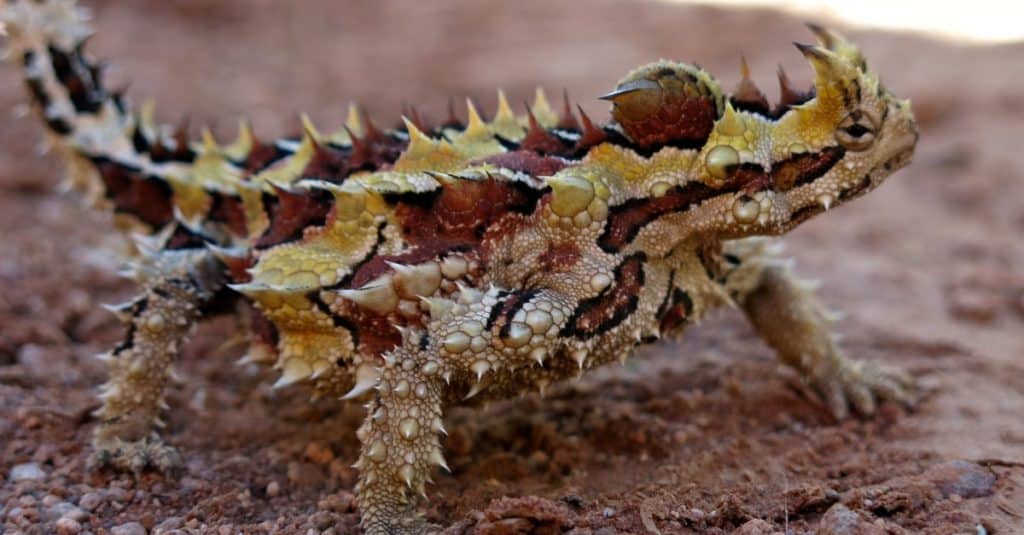
Thorny devils are small little lizards that are quite shy and hard to find if you don’t know what to look for.
©iStock.com/witte-art_de
One interesting reptile near Uluru is the thorny devil. In the area, it’s also called a ngiyari. This is easily one of the most mentioned animals when Kata Tjuta National Park is brought up. This has to be due to its unique characteristics.
The thorny devil is a lizard. As the name suggests, it’s covered in a lot of thorns, or spikes. While these spikes do provide a little bit of protection, that’s not their primary goal. These spikes are used to collect water. Since Uluru is located in a desert, the animals near Ayers Rock have to adapt to the area.
The spikes on the thorny devil use capillary action. This is when water gets pulled around thanks to cohesion and adhesion. The thorns help to drag water from dewdrops straight towards the lizard’s mouth.
Thorny devils eat ants. They are tiny, less than eight inches long, and can change their coloration based on their location and the amount of sunlight they get. This makes them pretty hard to find even though they are active during the day when you will likely be exploring the area.
2. Three-Lined Knob-Tailed Gecko (Nephrurus levis)

Even if reptiles aren’t your thing, you can’t deny that the three-lined knob-tailed gecko is absolutely adorable.
©JenuineLtd/Shutterstock.com
Known as waura by the locals, the three-lined knob-tailed gecko is pretty easy to recognize. There are a lot of geckos in Australia, and some are hard to tell apart. Thankfully, that isn’t the case with this little guy. Their large head and short, stubby tail make them easy to pick out from a lineup.
These geckos are small as well, less than four inches in length. Males are often a little smaller than the females. Like other similar animals, these geckos will release their tails to distract predators when they feel threatened.
Not much is known about them in the wild. They have a decent lifespan in captivity, as they can live up to 15 years. They are available for sale online, but they are much more adorable to see in the wild.
If they feel threatened, besides dropping their tail, they may stand up fully on their legs and open their mouths wide. This provides them with a little extra height to appear a little more intimidating.
3. Perentie (Varanus giganteus)
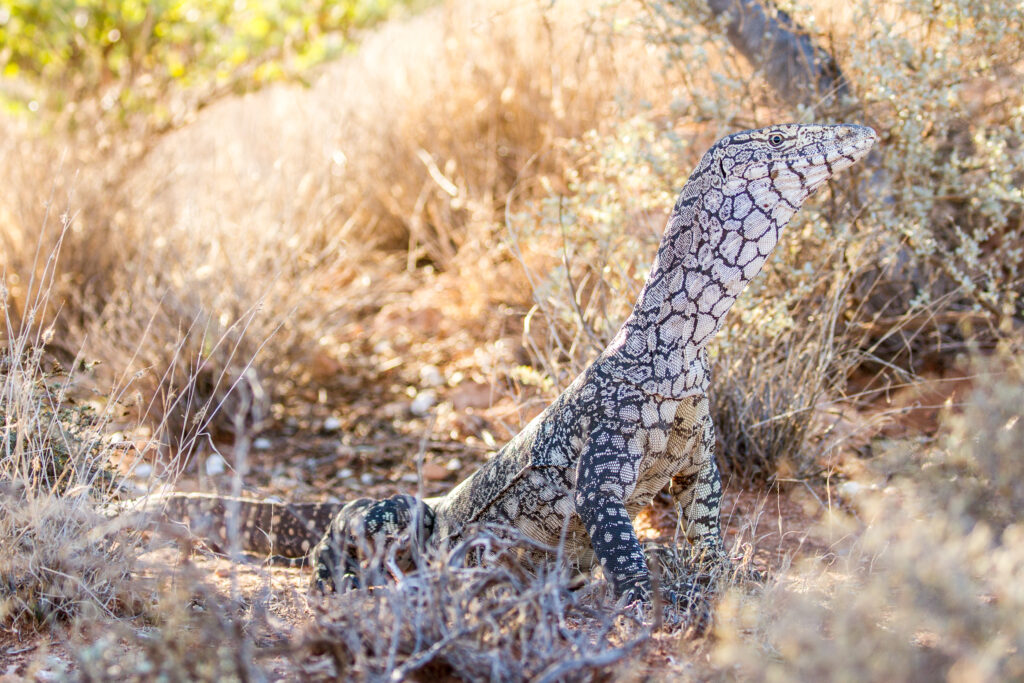
The perentie lizard is the largest monitor lizard in Australia.
©JacobLoyacano/Shutterstock.com
Perenties are a type of monitor lizard. They are not only the largest of their class in Australia, but they are the fourth largest in the world. Komodo dragons, Asian water monitors, and crocodile monitors are the only monitor lizards larger than this species.
Like other monitors, the perentie is a carnivore. Their diet mostly consists of birds, other reptiles, small mammals, marsupials, eggs, and insects. Their main predators are dingos. However humans sometimes also eat them for food.
While perenties are the largest lizard in Australia, they aren’t the only ones. The country has 25 of the total 56 known species of monitors. Some other monitor lizards you can see when you’re traveling are the lace monitor, mangrove monitor, and sand goanna.
You may also see the pygmy mulga monitor (also known as Gillen’s monitor) near Uluru. They are much smaller and have more of a brown or orange hue to their skin. This makes it easier to tell the two species apart if you come across these animals near Ayers Rock.
4. Centralian Tree Frog (Ranoidea gilleni)
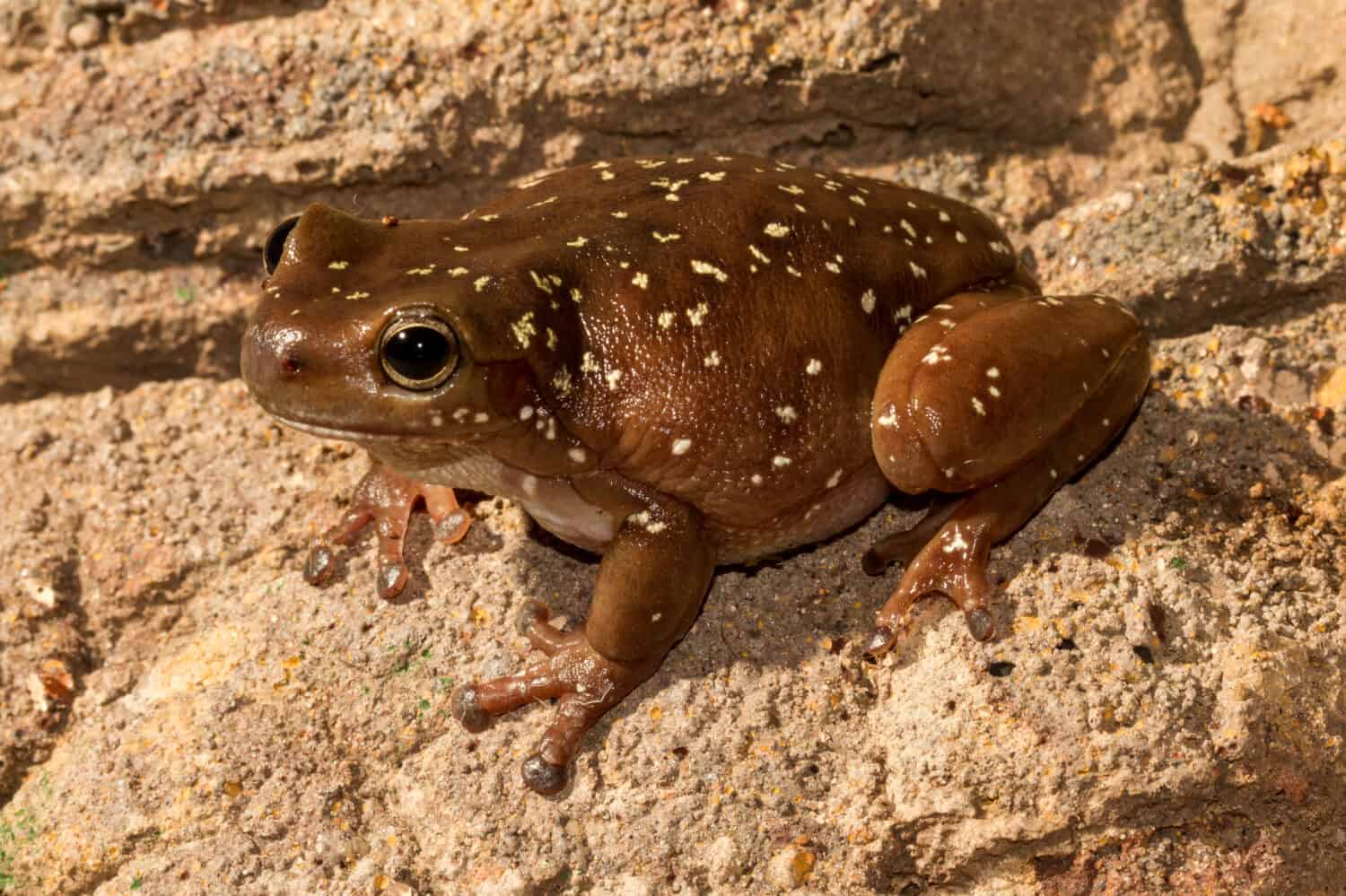
Centralian tree frogs are frogs that occupy a small range in Australia.
©Ken Griffiths/Shutterstock.com
Don’t let the image fool you. Centralian tree frogs are actually a large species of tree frog. They tend to range anywhere between a dark olive brown to a light green. Usually, they are covered in little white or cream spots. They also have a white underbelly.
They are usually seen most often in December. However, if you take care to look, you may be able to see them between September to February. Centralian tree frogs are nocturnal frogs. During the day, they hide from the heat under rocks or sturdy leaves. At night, they come out and explore.
There’s not a lot known about these frogs. The breeding is during the rainy seasons, usually near the summertime. They enjoy sitting at the bottom of ponds. The tree frogs lay their eggs in the same ponds. There isn’t much known about their tadpoles, including how long they take to reach maturity and start developing into frogs.
Birds
You might not expect birds in the desert to have a lot of flair to them. However, if you go at the right time, you will find all sorts of birds that you’d have never imagined before. They are full of color and personality you won’t see from birds anywhere else.
5. Splendid Fairy-Wren (Malurus splendens)
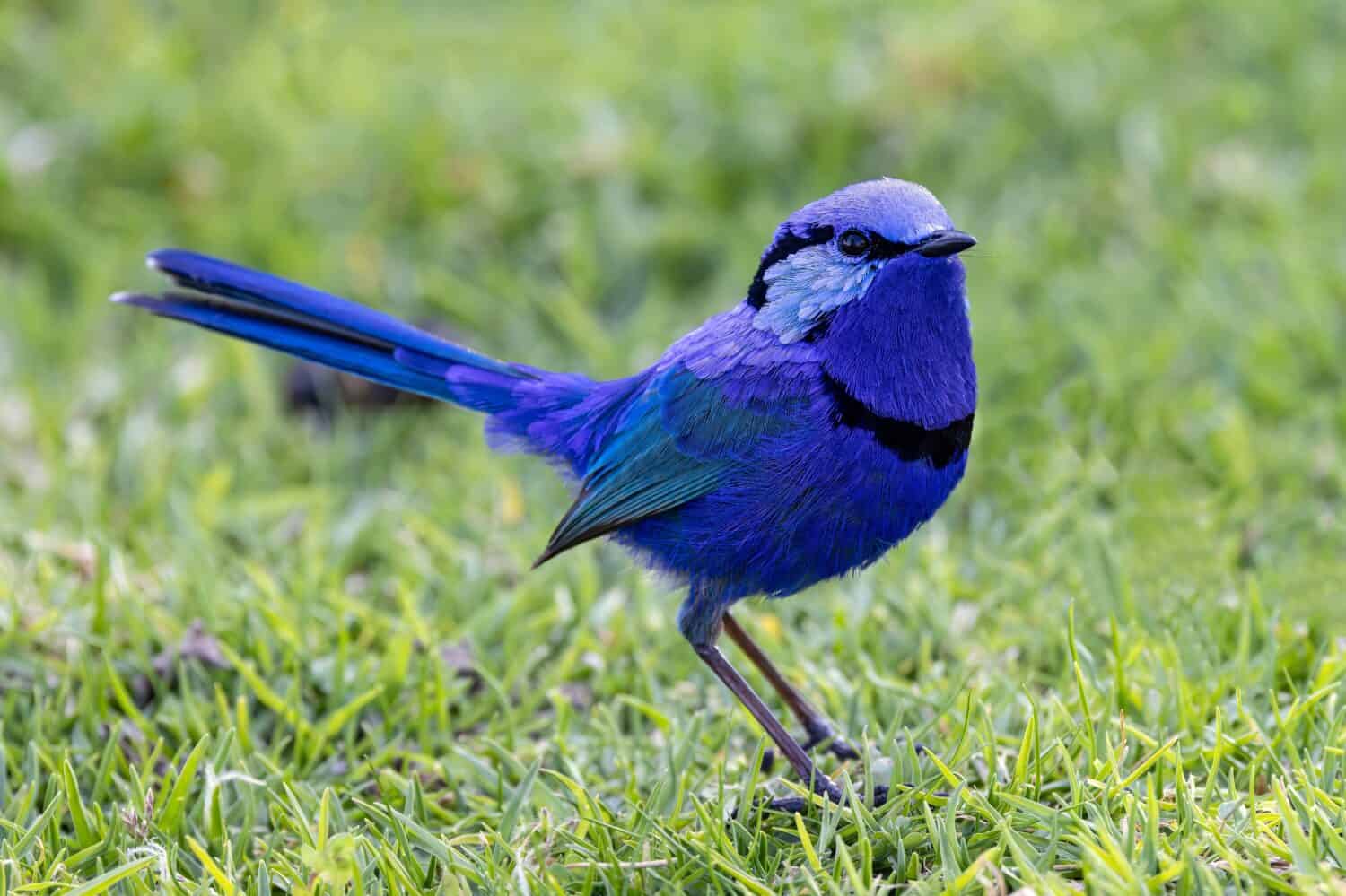
Splendid fairy-wrens have a lot more purple coloring to them than other types of fairy-wrens.
©Ken Griffiths/Shutterstock.com
While the male splendid fairy-wrens are certainly gorgeous during certain times of the year, this is normally a plain brown bird. If you want to see these little birds in all of their glory, you’ll want to visit the area sometime between September to December.
This is their breeding season. During that time, the males will start to turn in the magnificent purple-blue color you see in the image above. Their cheeks will often be lighter blue.
If you take a tour of Uluru, you’re likely to come across the splendid fairy-wren. They are often found around the Uluru base walk location or the mala walk.
Their native name is mirilyirilyi. They are considered the most beautiful species of fairy-wren. With their bright colors, they are easily noticeable by humans and predators. This is a key part of their mating behavior, as they often sing around predators to show how bold they are to attract a female.
6. Pink Cockatoo (Lophochroa leadbeateri)
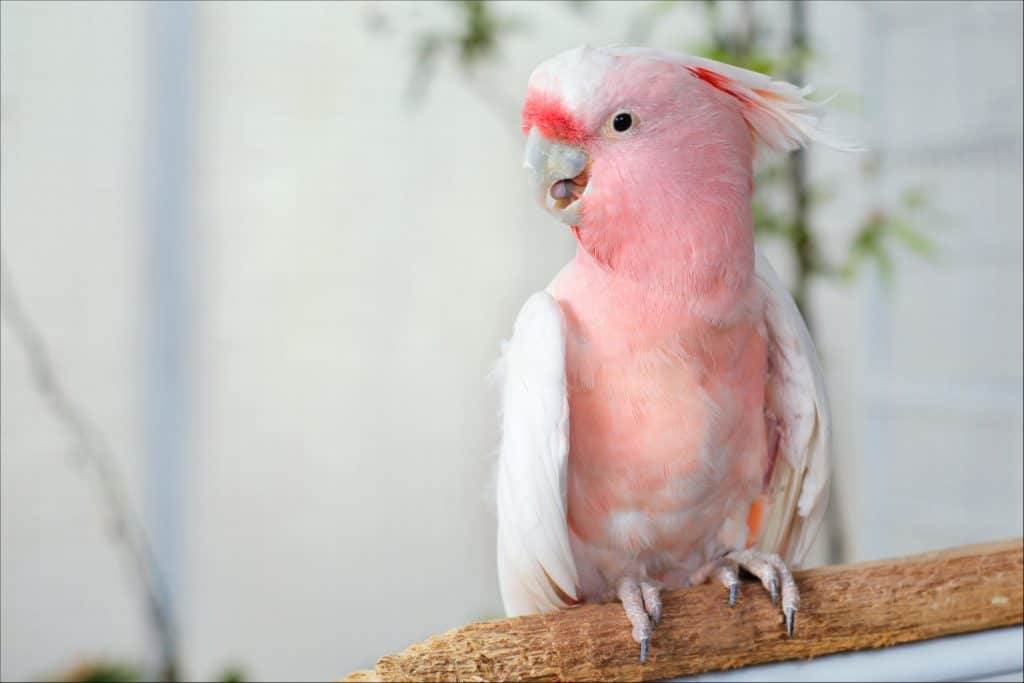
A pink cockatoo from Australia is a bright pink, similar to a flamingo.
©Gatot Adri/Shutterstock.com
This pink cockatoo goes by many names. You can hear it be called the desert cockatoo, or Major Mitchell’s cockatoo. They are also called kakalyalya by the local people. When you think of animals near Ayers Rock, you might not think about bright pink birds, but these are quite abundant in the area.
Besides the bright pink colors, they also tend to have white, especially around their wings and crest. When the crest is fully extended, they may have bits of yellow and scarlet that appear as well.
These colorful birds spend most of their day eating. They enjoy seeds, nuts, roots, and fruit. Their favorites tend to be from acacia seeds and cypress pines.
If you’re on the hunt for these unique birds, the best option is to wait until dawn or dusk. This is when they are out and about and are the easiest to catch sight of.
7. Mistletoebird (Dicaeum hirundinaceum)

Mistletoebirds are colorful little birds that live throughout much of Australia, especially the western half.
©Imogen Warren/Shutterstock.com
Mistletoebirds are also known as Australian flowerpeckers. They are a type of bush bird. While the male birds are blue and orange, as pictured above, the females are a little more dull. They tend to be gray and white. The young males do have some red markings on their chest which makes them stand out.
They are called mistletoebirds because they are found anywhere mistletoe grows. They are actually heavily responsible for the dispersal and growth of the mistletoe plant. Interestingly, they do not have a gizzard like many birds do.
Since they adapted to eating berries, they can pass the seeds through quickly, and excrete the seeds and skins. The seeds can then germinate and start growing new plants. This helps to create a cycle where mistletoe continues growing and spreading while mistletoebirds ensure they have a constant food supply.
They do catch a few insects. While they eat them as supplemental food, most of the bugs they catch are to feed their young, which need a little different food than the parents. The young are found in pear-shaped nests that look and feel silky.
8. Red-Backed Kingfisher (Todiramphus pyrrhopygius)

Though kingfishers are most commonly associated with water, this one loves the dry forests as well.
©Wright Out There/Shutterstock.com
The red-backed kingfisher is also known as a tree kingfisher. They have the same blue-green coloration on the wings as most kingfishers do. What makes them different is the chestnut coloration on the rump at the base of the tail.
This kingfisher enjoys the scrub and grasslands found near Uluru. Mulga trees and mallee trees are the favorite perches for these kingfishers.
Though they are agile flyers, they prefer to catch their prey on the ground. They eat insects and small reptiles the most, though they may catch the occasional rodent or two. They are one of the animals near Ayers Rock if it’s not during breeding season.
During breeding season, which is between October and December, red-backed kingfishers will move towards rivers. They make their nests by digging burrows into the earth. These burrows may be as large as 50 inches wide.
Mammals
You’ll also see mammals wandering around near Uluru. Most of them are small rodents and marsupials, but you may see some larger mammals if you look around.
9. Spinifex Hopping Mouse (Notomys alexis)
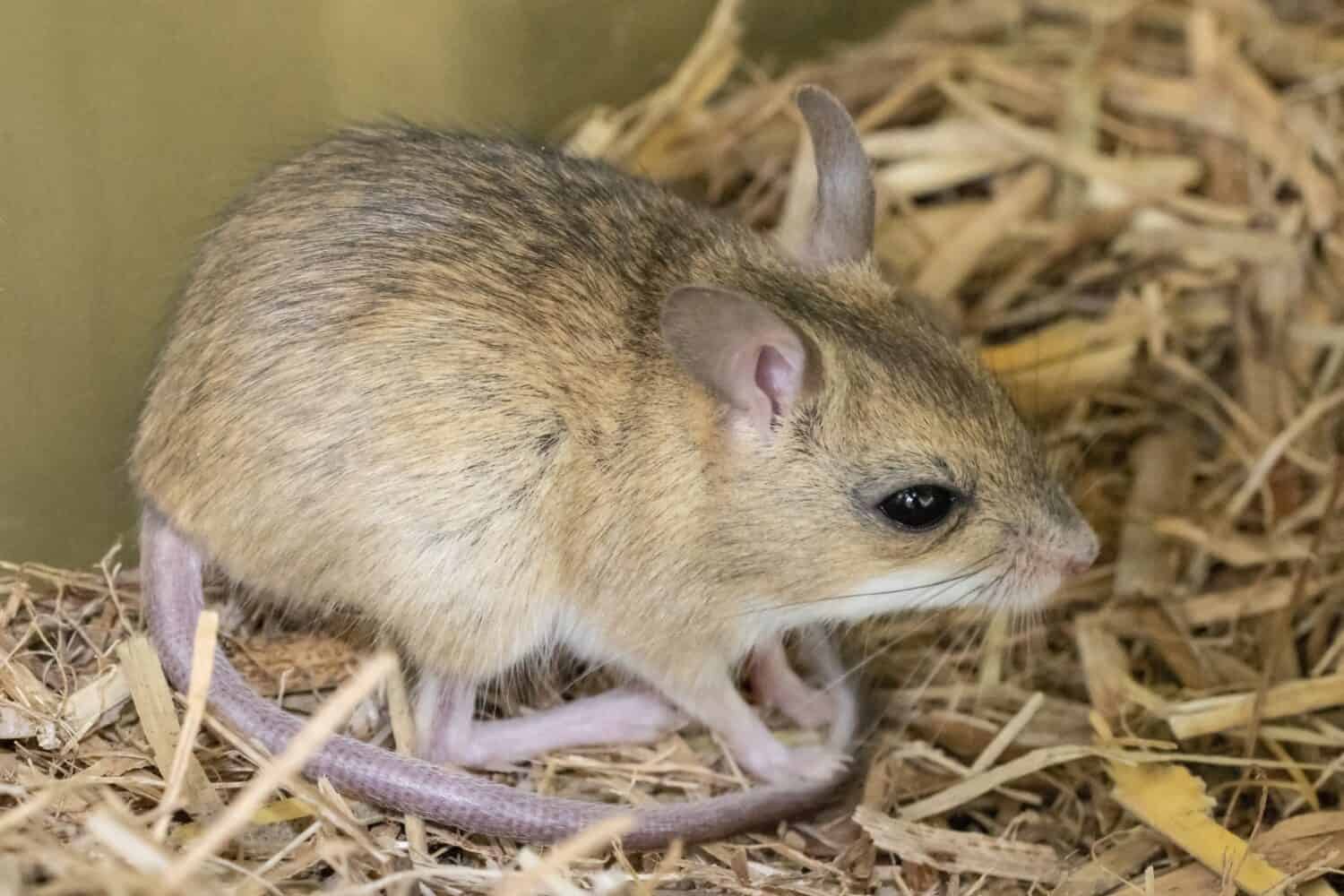
Spinifex hopping mice are nocturnal mammals and are hard to find.
©Ken Griffiths/Shutterstock.com
Their name rings true. The spinifex hopping mouse, or tarkawara, is a small rodent that jumps through open areas. They look like kangaroos when they hop around. This is because their back legs are greatly elongated to allow for easier jumping.
They’re also often found in spinifex, a type of grass. These mice have deep burrows for their homes, and the entrances are lined with twigs and leaves. They are omnivores, feasting primarily on seeds, roots, and small insects.
It gets hot in the desert. When the temperature gets too warm, these small rodents have a unique ability. They can change their body temperature to combat the heat. By increasing their internal body temperature, it makes the surrounding air feel cooler.
Another interesting fact about spinifex hopping mice is that their populations are dependent on rain. After it rains for a while, their numbers often greatly increase in the area. They gravitate towards rain and have traveled over nine miles just to move closer to a storm.
10. Desert Dingo (Canis lupus dingo)
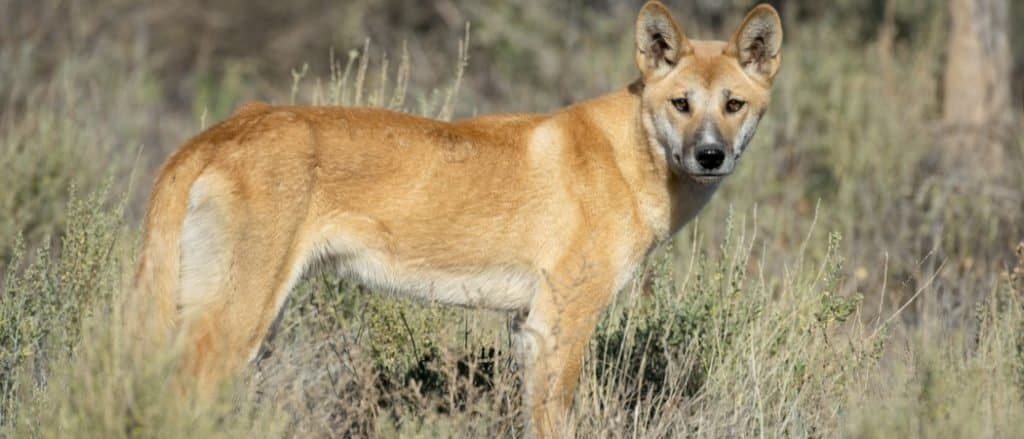
Desert dingos look like dogs, but have some distinct differences.
©iStock.com/JohnCarnemolla
Dingos are feral dogs. They are close enough genetically to domesticated dogs that they can even interbreed with them. They’ve been around a long time and play important roles in local mythology. While it’s unknown how long dingos have been around Australia, there have been fossils found that are over 3,500 years old from the area. They are known as papa by the locals.
There’s a lot to learn about the dingo. These feral dogs are classified as a subspecies of gray wolves but are distinct enough to be considered a separate species by now.
Some theories are those dingos were brought over by people as a domesticated dog breed. However, there are disagreements with this theory. Some people believe they migrated on their own during a period when the sea levels were lower.
They share a lot of similarities to dogs. One distinct difference is that they do not bark like domesticated dogs do. Instead, they howl, much like wolves. They do have a bark, but it’s more of a yip that you would hear from wolves and not a bark you’d recognize from your canine companion.
11. Bilby (Macrotis lagotis)
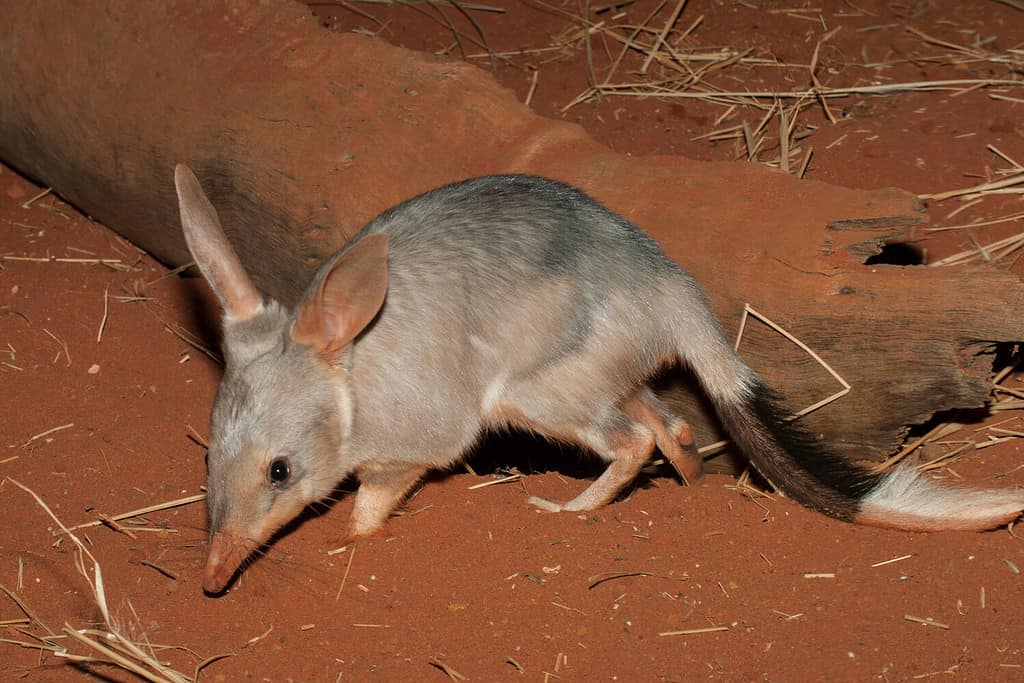
Bilbys are little marsupials that take the place of the Easter Bunny in Australia.
©Ken Griffiths/Shutterstock.com
Bilbys are one of the cutest animals you’ll come across in the desert near Uluru if you’re lucky. They are little marsupials with a tri-colored tail. Bilbys enjoy eating termites and ants. This marsupial is rather good at eating small insects as they have long tongues that allow them to gather up their prey without ever having to destroy the nests.
Technically, bilbys are called greater bilbys. Unfortunately, the species known as the lesser bilby went extinct almost a century ago, so the species still extant has now been commonly referred to as bilby. In the native language, their name is yuwaalaraay, and they are still one of the animals near Ayers Rock you can find.
They have a lot of predators. The most dangerous to the population are foxes, dingos, and cats. These were not originally natural predators, but ones introduced by humans (or migrated, in the possible case of dingos).
Not only did the predators attack and kill the animals, but they also brought diseases that decimated the populations. This change, paired with massive habitat destruction, caused them to be listed as Vulnerable by the IUCN.
12. Rufous Hare-Wallaby (Largochestes hirsutus)

The rufous hare-wallaby is now all but extinct in the wild.
©Martin Pelanek/Shutterstock.com
Rufous hare-wallaby is a small breed of wallaby. They used to be the most abundant in the Northern Territory of Australia. Unfortunately, in more recent times, they are considered extinct in the wild.
They are called Mala by the native people and are very important for the Anangu. Unfortunately, their importance and abundance weren’t enough to keep them going. The introduction of cats and foxes to the local area led these little wallabies to be predated at a much higher rate than before.
The lack of burning practices to stop massive wildfires also played a major role. With more wildfires, the wallabies were more likely to lose their habitat.
Thankfully, the Kata Tjuta National Park runs a reintroduction program. Though they are no longer in the wild, there are still enough in captivity to keep a successful breeding program going for these animals near Ayers Rock. If you’re lucky, you may see some of the species going through the rehabilitation program in the area.
Summary of the Animals Near Ayers Rock
| Number | Animal Name | Scientific Name | Local Name | Type of Animal |
|---|---|---|---|---|
| 1 | Thorny Devil | Moloch horridus | Ngiyari | Reptile |
| 2 | Three-Lined Knob-Tailed Gecko | Nephrurus levis | Waura | Reptile |
| 3 | Perentie | Varanus giganteus | Ngintaka | Reptile |
| 4 | Centralian Tree Frog | Ranoidea gilleni | Nganngi | Amphibian |
| 5 | Splendid Fairy-Wren | Malurus splendens | Mirilyirilyi | Bird |
| 6 | Pink Cockatoo | Lophochroa leadbeateri | Kakalyalya | Bird |
| 7 | Mistletoebird | Dicaeum hirundinaceum | Miilka | Bird |
| 8 | Red-Backed Kingfisher | Todiramphus pyrrhopygius | Luunpa | Bird |
| 9 | Spinifex Hopping Mouse | Notomys alexis | Tarkawara | Mammal |
| 10 | Desert Dingo | Canis lupus dingo | Papa | Mammal |
| 11 | Bilby | Macrotis lagotis | Yuwaalaraay | Mammal |
| 12 | Rufous Hare-Wallaby | Largochestes hirsutus | Mala | Mammal |
The photo featured at the top of this post is © LouieLea/Shutterstock.com
Thank you for reading! Have some feedback for us? Contact the AZ Animals editorial team.







